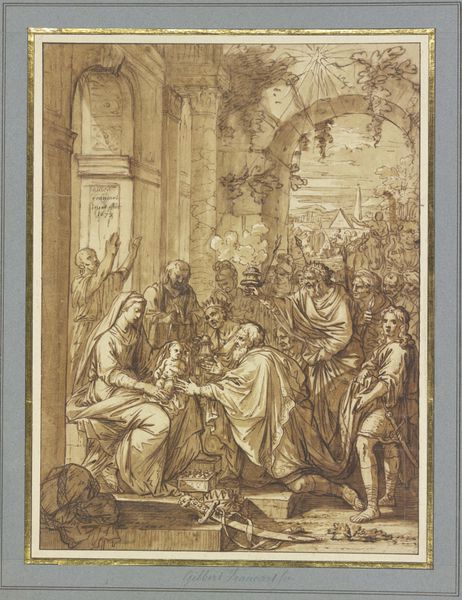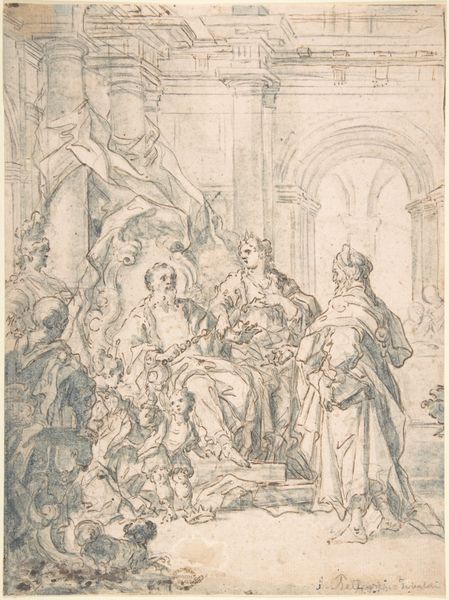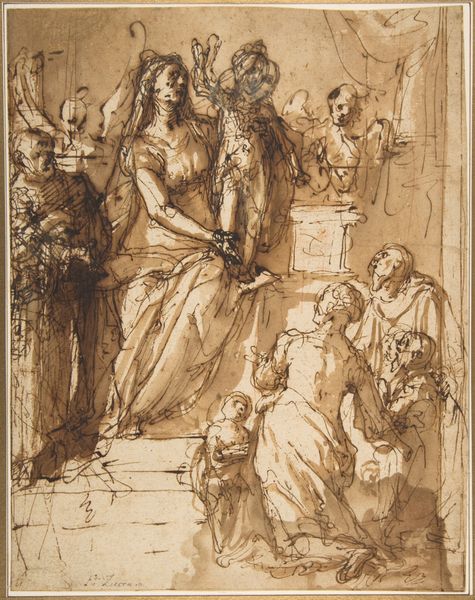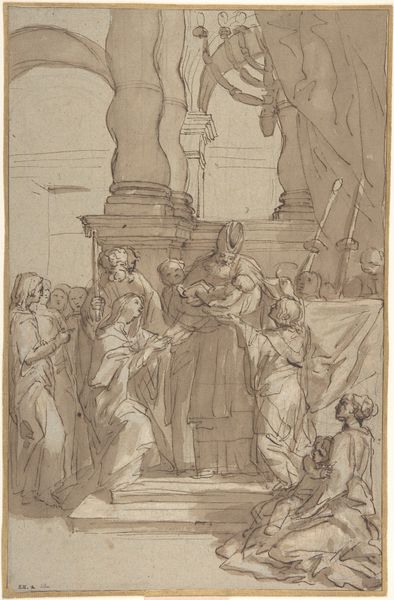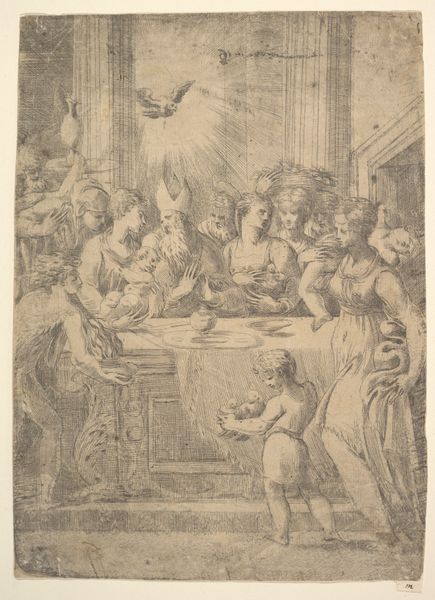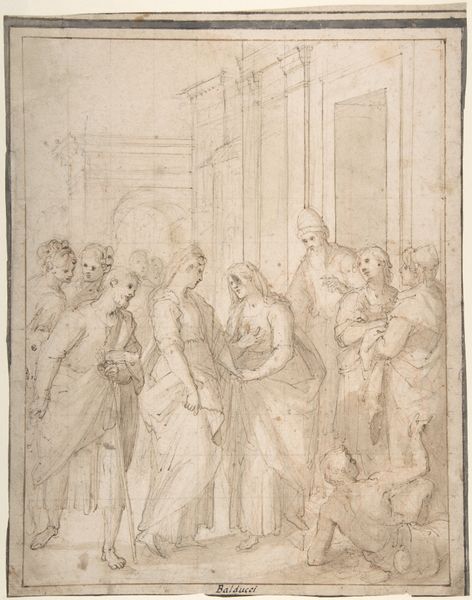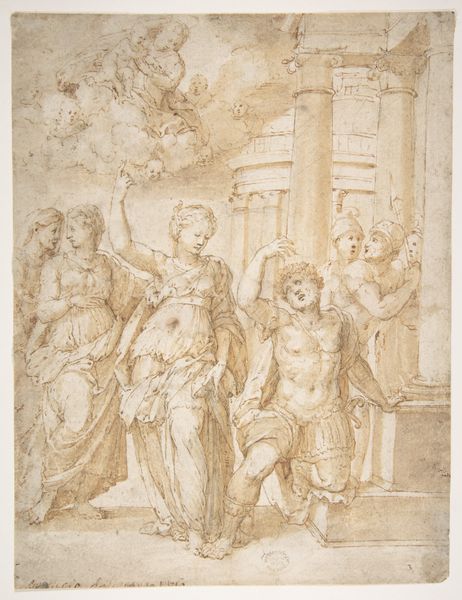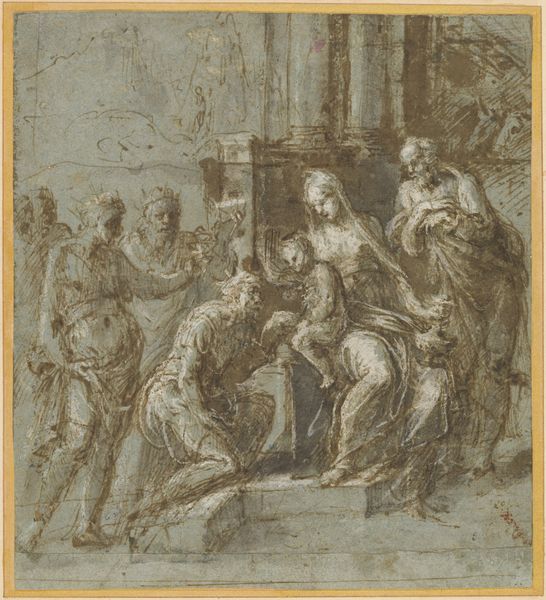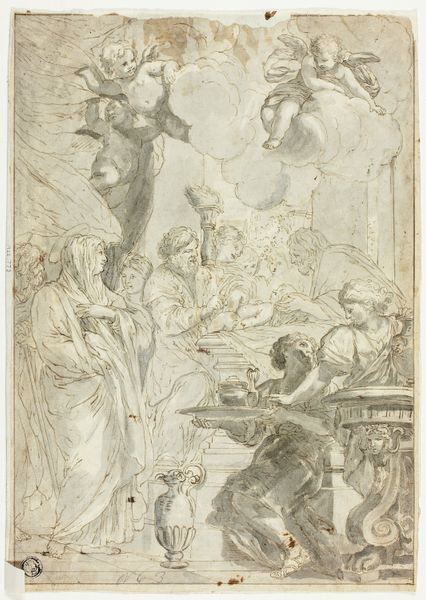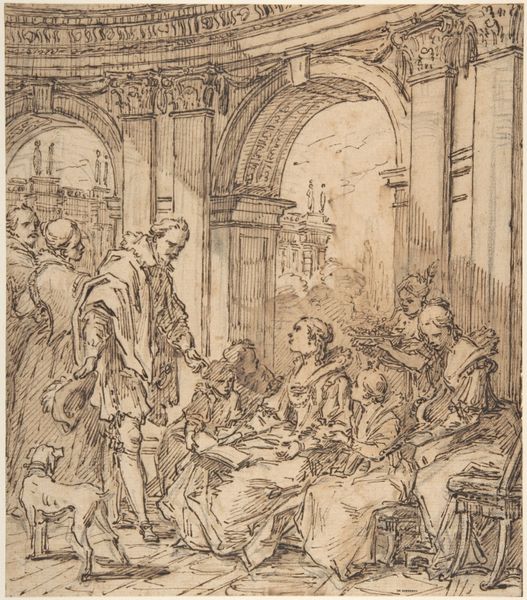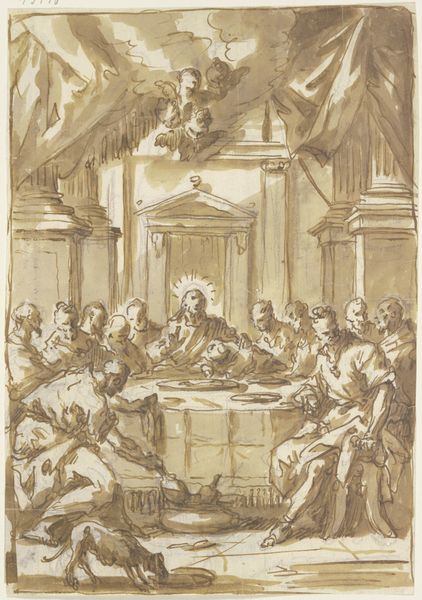
Esther and Mordecai before King Ahasuerus (Esther 8:1- 12) 1536 - 1615
0:00
0:00
drawing, print, ink, charcoal
#
drawing
#
narrative-art
# print
#
charcoal drawing
#
figuration
#
11_renaissance
#
ink
#
charcoal
#
history-painting
#
italian-renaissance
Dimensions: 12 7/16 x 8 13/16in. (31.6 x 22.4cm)
Copyright: Public Domain
Curator: I find this drawing, attributed to Giovanni de' Vecchi and dating from around 1536 to 1615, quite captivating. It is rendered in ink and charcoal, a detailed depiction of "Esther and Mordecai before King Ahasuerus." Editor: The scene is undeniably intense. The somber, monochromatic tones give it a sense of seriousness, even foreboding. The hurried, sketchy linework amplifies that anxiety. Curator: The social dynamics here are crucial. This is a potent moment from the Book of Esther. Remember that Esther, a Jewish woman, risks her life to reveal a plot against her people to King Ahasuerus. This artwork, acquired by The Met in 1887, depicts a crucial shift of power. Editor: Yes, look at the staging. Esther is positioned at the right, modestly dressed. We can discuss its problematic representations but at this moment she challenges the status quo. It is a direct act of bravery that redefines her place within the political hierarchy. Curator: The figures' placement within the grand, almost overwhelming architectural setting really emphasizes the institutional weight of the scene and the social forces at play. The Renaissance placed considerable emphasis on the individual within systems of power. Editor: Indeed, while Renaissance art often portrays women as passive objects, here, Esther’s agency, though expressed within highly constrained parameters, feels very pronounced. Her intervention leads to justice. But one must examine from where comes her bravery, the weight that women carries as they push against societal structures. Curator: I think situating Vecchi’s art within the larger historical narrative underscores art’s capability to capture crucial moments of sociopolitical discourse. How power is manifested and occasionally contested! Editor: Absolutely. Viewing artwork in a historical context helps illuminate complex interplay. It offers space for critical reflection to dismantle and decolonize biased narratives around institutions. Curator: Agreed. Vecchi's "Esther and Mordecai before King Ahasuerus" invites discussions on power dynamics in the arts. Editor: The piece is so compelling, not just as a religious history, but as a historical marker for how the powerful interact within a setting.
Comments
No comments
Be the first to comment and join the conversation on the ultimate creative platform.
